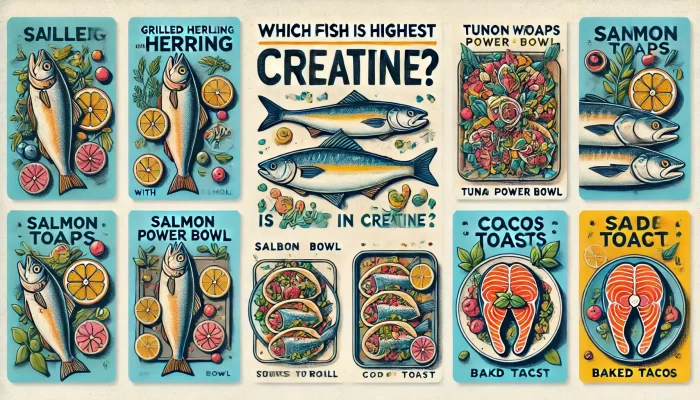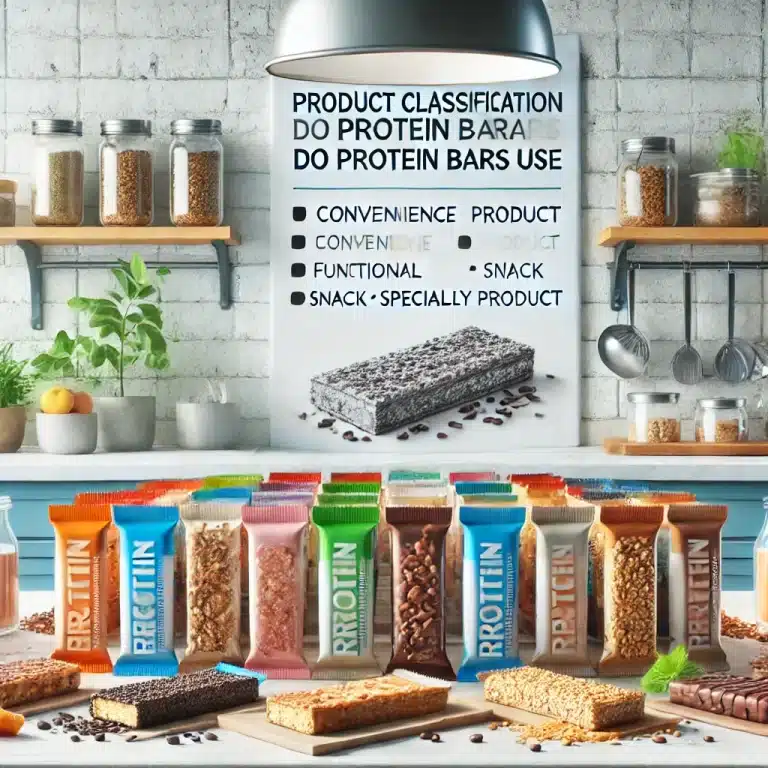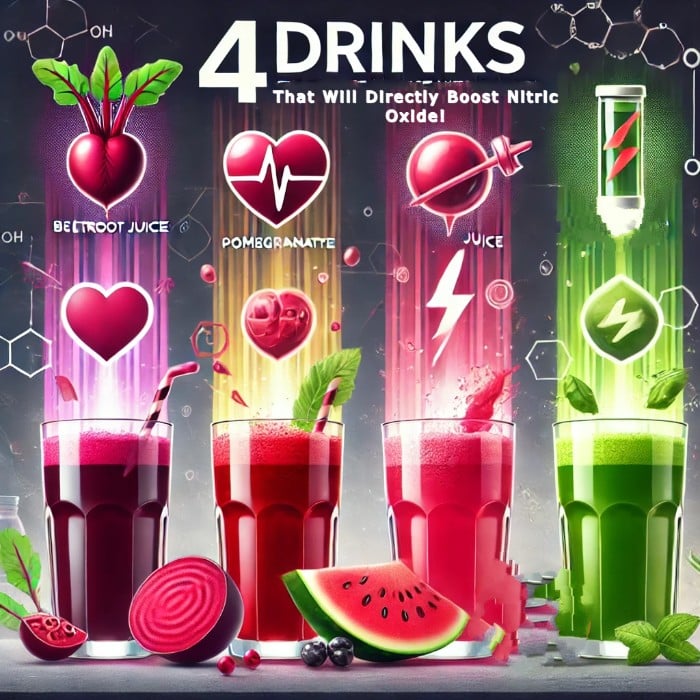Which Fish Is Highest In Creatine?
If you enjoy exercise, you have most likely heard creatine discussed as some sort of magic powder, and truthfully, this is not far off. From pros to gym bros, everyone appears to swear by it for increasing strength, recuperation, and even brain power. The trick is that, although creatine pills are all around, not everyone knows you may also obtain a reasonable dose directly from your plate. Not calling for a shaker bottle.
Correctly is spoken. Fish are one of the richest natural sources of creatine; a tub of neon-colored powder does not contain any. Real, entire fish loaded with nutrients. Furthermore depending on the variety, some variants pack more creatine than your typical steak or chicken breast. Quite wild, then.
Knowing which fish is highest in creatine could therefore be a game-changer whether your goal is to eat cleaner, leaner, or just mix things up. We’re delving deep, pun intended, into the sea of possibilities in this guide, dissecting the finest fish for creatine, why they’re so potent, and how to incorporate them into your regimen without feeling as though you’ve joined a Viking seafood cult.
Herring is almost going to be your new best friend.
The Fish with the Most Creatine:
Which fish thus rules supremely in the creatine category? Drumroll nice. Herring is it! With about 3-4.5 grams of creatine per pound (1.1-2 grams per 100 grams), this fatty, savory fish is the heavyweight champion. But wait; there is even more. Herring loads omega-3 fatty acids, vitamin D, and premium protein in addition to being a creative powerhouse. It is rather like the Swiss Army knife of nutrition.
Why would herring be even better? Its adaptation.
Traditional recipes like Scandinavian herring salads let you eat it pickled, smoked, grilled, or raw. Its strong taste accentuates fresh herbs, a dash of lemon, or acidic mustard sauces. Furthermore cheap and readily available, it’s a wise decision for anyone trying to increase their creatine use without going broke.
Herring is so nutrient-dense that it grows best in cold seas. Cold-water fish frequently have more omega-3s, and in Herring’s case, a reasonable quantity of creatine also. You are thus boosting heart health, cognitive function, and general well-being in addition to fuelling your workouts.
Creatine Content and Calories in Popular Fish:
To make it easy to compare, here’s a handy table showing the creatine content and calorie count of some popular fish:
| Fish | Creatine (g per 100g) | Calories (per 100g) | Bonus Nutrients |
|---|---|---|---|
| Herring | 1.1 – 2 | 158 | Omega-3s, Vitamin D, B12 |
| Salmon | 1 – 2 | 206 | Omega-3s, Vitamin D, Selenium |
| Tuna | 1 – 2 | 132 | Lean Protein, Vitamin B12, Potassium |
| Sardines | 1 – 1.5 | 208 | Calcium, Iron, Omega-3s |
| Cod | 0.3 – 0.5 | 82 | Lean Protein, Vitamin B6, Niacin |
Herring dominates the throne, as you can see, but solid challengers are salmon, tuna, and sardines too. Thanks to its lean protein and low-calorie value, even cod, which has less creatine, earns a place.
Thus, consider going beyond the supplement bottle when you are meal planning next time. Just what you need to boost your creatine game might be a great, nutrient-dense piece of fish.
Why Choose Fish Over Supplements?
Indeed, creatine pills are handy, particularly if you have to reach particular consumption goals or travel and need anything. However, obtaining your creatine from natural food sources such as fish has some quite amazing advantages that go much beyond mere levels of consumption.
1. More Than Just Creatine:
Fish provide not only creatine but also a heavy concentration of other nutrients including omega-3 fatty acids, premium protein, vitamins (including D and B12), and vital minerals like selenium and iodine when you eat them. Together, these nutrients support brain function, heart health, even mood control. It’s like having a full team of nutrients instead of only one solitary performer.
2. Better Absorption:
Whole foods tend to provide nutrients that your body more effectively absorbs. Fish’s inherent vitamin, mineral, and healthy fat matrix helps your body more efficiently use creatine. Furthermore, the good fats found in fatty fish such as salmon and herring can help the absorption of nutrients generally.
3. Fewer Side Effects:
Particularly if taken in high amounts, some people find stomach trouble, bloating, or cramps with creatine supplements. Natural food sources lower the danger of those bothersome side effects by being milder on the digestive tract.
4. Delicious and Satisfying:
To be honest, no supplement can taste as good as a well-grilled salmon piece or a delicious sardine sandwich. Eating fish high in creatine is about enjoyment of your diet as much as nourishment. Moreover, cooking and dining with friends or relatives is far more fulfilling than preparing another shaker bottle.
5. Sustainable Health Benefits:
Long-term health advantages of whole foods go beyond only muscle performance. Consistent fish intake has been related to lower heart disease risk, enhanced cognitive ability, and better mental wellness. That is far more than what a scoop of creatine powder provides!
Therefore, the next time you’re trying to increase your consumption of creatine, think about substituting a good fish meal for that supplement. Your body will appreciate you as well as your taste receptors.
How to Incorporate Creatine-Rich Fish into Your Diet?
Including fish high in creatine in your diet is not difficult. It can be quite enjoyable and good! These simple, delicious ideas will inspire you to get going.

1. Grilled Herring with Lemon & Dill:
This is a basic but delicious meal that accentuates the strong flavor of herring. Just marinade the fish using olive oil, fresh dill, a squeeze of lemon, and a bit of salt. Cook it till the margins are golden and crispy. For a balanced, nutrient-dense dinner, team it with roasted potatoes and a fresh cucumber salad.
2. Salmon Power Bowl:
Perfect for a quick, filling dinner or meal prep. Sear or bake salmon fillets and present them over quinoa, mixed greens, roasted vegetables, and sliced avocado. Drizzle with a tangy lemon vinaigrette or tahini for an additional taste explosion and good fats.
3. Tuna Wraps with a Twist:
Tuna is not always dull. Combining canned tuna with Greek yoghurt, Dijon mustard, diced celery, and fresh herbs will create a crisp, filling lunch on-the-go, wrap it all up in a whole-grain tortilla with some shredded carrots and spinach.
4. Sardine Toast (Trust Me on This One!):
Spread the mixture over toasted sourdough bread after mashing sardines with some olive oil, lemon juice, and chili flakes. Top with fresh parsley, finely sliced radishes, and a scattering of sea salt. It is loaded with taste, good lipids, and, of course, creatine.
5. Cod Tacos with a Fresh Twist:
Excellent tacos come from light, flaky cod seasoned with cumin, paprika, and a squeeze of lime. Present on corn tortillas alongside avocado slices, crisp cabbage slaw, and a drizzle of creamy yogurt-lime sauce. Perfect for guilt-free Taco Night.
6. Quick Sardine Pasta:
Toss sautéed garlic, olive oil, cherry tomatoes, sardines whole-grain pasta for a quick meal. Finish with a squeeze of lemon and a scattering of fresh basil. It’s quick, tasty, and nutrient-dense.
7. Baked Cod with Herbs:
Season fish fillets with olive oil drizzles, lemon, garlic, and fresh thyme. bake till flaky and tender. Present with steamed veggies and quinoa for a simple, protein-rich dinner with a low-calorie count but a high nutrient load.
The best thing about it is That these dishes don’t call for a great chef. A few fresh foods and basic seasonings will help fish high in creatine into something you’ll like eating.
Pro Tips for Maximizing Creatine Intake
Looking for the most bang for your money on creatine from fish?
These pro hints will enable you to maximize your meals:
- Though canned fish is quite handy, fresh or frozen fish usually retain more nutrients, like creatine. Cooking from fresh ingredients also lets you more control over texture and taste.
- Choose mild cooking techniques; high heat and extended heating can lower fish’s creatine level. Stuck to mild techniques like simmering, poaching, or gently grilling to maximise as much as you can. Good also are quick sautés and moderate temperature baking.
- Overcooking not only dries out your fish but may also reduce nutritional levels. Try for a soft, flaky texture; fish should be opaque but still moist inside.
- Though fish is already a great source of creatine, combining it with nutrient-dense sides like quinoa, spinach, and sweet potatoes increases more vitamins and minerals that assist muscle recovery and energy metabolism.
- Eat a range of fish; don’t limit yourself to one kind. To cover a wider range of nutrients, rotate among herring, salmon, tuna, sardines, and cod. Every fish has different taste sensations and health advantages.
- While you shouldn’t worry about exact time, taking meals high in creatine either before or after your workout will aid with performance and recovery. Having consistency over time is, then, more crucial than scheduling one meal.
- Creatine helps your muscles extract water, which is fantastic for performance but also means you should keep well-hydrated. Enough water aids in general recuperation and supports the potency of creatine.
These easy ideas will help you to maximise the advantages of creatine from natural food sources and enjoy good, filling meals. Your taste senses and your exercise objectives will both benefit from it.
FAQs About Creatine in Fish:
How much fish should I eat to get enough creatine?
That depends on your objectives. For instance, one to two grams of creatine is obtained from one hundred grams of herring. A few times a week consumption of fish such as tuna, salmon, or herring will help you naturally achieve your creatine requirements without overindulging.
Does cooking fish reduce its creatine content?
Indeed, somewhat. Long cooking or high heat might reduce creatine levels. Choose milder techniques like simmering, poaching, or light grilling to preserve as much creatine as you can. Also quite good is quick sautéing.
Are there any side effects from eating too much creatine-rich fish?
Though moderation is important, fish is quite healthful. Eating too much, especially of fish heavy in mercury like tuna, can be dangerous for your health. To keep balanced, mix items using many fish and protein sources.
Can I eat canned fish and still get creatine?
Certainly! Though perhaps in less abundance than fresh fish, canned fish like tuna and sardines nonetheless contain creatine. They are a terrific choice for hectic days since they are still loaded with nutrients and quite handy.
Can vegetarians or vegans get creatine from plant-based sources?
Regretfully, not really. Mostly present in animal products like fish and meat is creatine. Since plants don’t naturally create creatine, vegetarians and vegans sometimes find themselves looking to creatine supplements.
Final Thoughts:
Though it’s one of the most investigated, dependable, results-oriented supplements available at the end of the day, creatine doesn’t have to come from a scoop. Fish, especially herring, shows how nature has her own way of delivering this performance-boosting chemical.
Including fish high in creatine, such as tuna, salmon, and herring, you are not only strengthening your strength and endurance but also providing your body with premium protein, brain-boosting omega-3s, and a whole array of vital nutrients all at once. We like to see that kind of nutritious multitasking.
To be honest, you most likely won’t consume three fillets of herring every single day (unless you’re some sort of Scandinavian bodybuilder). And that’s quite good. View this as a complementary strategy. Eat to create a strong basis; augment as necessary to meet your objectives.
Therefore, keep in mind that you are not only buying for dinner the next time you are past the fish counter at the grocery or gazing down at a can of tuna. You are seeking gains in shopping.






